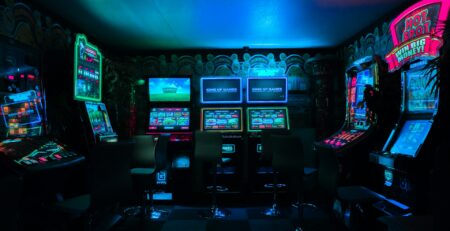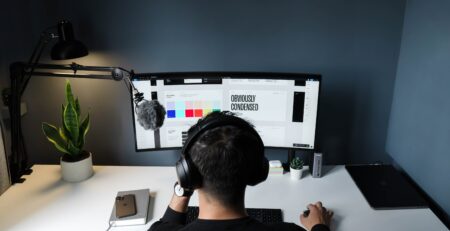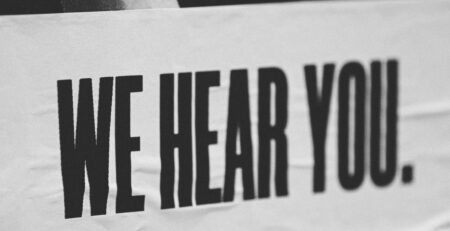Mastering Nostalgia in Web Design
Products linked with fond memories of the past have a strong appeal for people affected by them. That appeal feels automatic for the viewer since the feeling is already built into their psyche. Many web designers have tapped into these nostalgic feelings with great success, but some others have missed the mark and come across as antiquated, overly hip, or out of touch.
If you can master nostalgia in your web design, you not only benefit from that automatic association. You also demonstrate care and familiarity with your customer base. It’s not about faking a link – build an authentic appeal to nostalgia and your designs will be significantly more effective.
Doing so requires a thorough understanding of what nostalgia is, how it’s created, and the many forms it can take. Read on to learn some web design tips and everything else you need to know about constructing web designs that use nostalgia effectively.
What Is Nostalgia?
The most common simple definition of nostalgia is a strong emotional feeling for some time in the past. People might feel nostalgic about some time in their lives because life was better, easier, or more fun back then. Other people or cultural trends may also play a role.
Historically, the term ‘nostalgia’ originally meant something more like homesickness. The feeling it describes today is very close to homesickness but the aspect of time lends it an entirely new dimension.
But nostalgia serves an important psychological function. One of the most important purposes nostalgia serves is to provide us with a sense of unity over the course of our lives. Everyone changes as they grow up, but the positive feeling of nostalgia helps us reconcile who we are with who we used to be.
We create our personal sense of authenticity that way. Stark changes from our past can feel fake or hollow if there’s not some sense of continuity. If you ask most people who they are, their answer will reflect or rely on who they have been in the past to prove who they feel they are in the present.

Is Nostalgia Bad?
Progress and innovation are both important ideas in our society. Nostalgia gets a bad reputation because it appears to focus on the opposite – a backward-looking obsession with a time that no longer exists doesn’t mesh well with the immediate moment.
But if you think about it, nostalgia is a generally positive feeling. The reflections it brings on are very favorable toward a time in history. Many people associate it with negativity because that focus on a past moment or era implies disapproval of the present.
When it has some substance to it, nostalgia is a unifying feeling. It brings people together in the present and makes us feel closer to the people who were with us in the past, whether or not they’re still physically present in our lives today. Older generations can connect with new ones by telling stories of how things were, repeating traditions, or handing down personal items like cars.
There is some danger that nostalgia can be used to limit present-day experience, but that depends more on the person than on the feeling itself. For example, someone who is mentally stuck in a bygone era and doesn’t do much to interact with the real world might be doing so because they have a fear or dislike of the present day, which may be driving their feelings of nostalgia but is ultimately a separate issue.
Web Design Tips for Evoking Nostalgia
Nostalgia can seem entirely out of place, lazy, or pandering if web designers don’t use it right. Less severely, it could be viewed as a gimmick if it doesn’t have much to do with the product or the needs of the viewers.
Big developmental hurdles like joining the workforce, living on your own, or the first signs of the aging process are prime times to start looking back fondly at an earlier time. That’s why some of the most common implementations of nostalgia in web design are used on projects that appeal to people in their 20s and 30s.
These younger people are also the most technologically savvy. As much as they enjoy seeing web design that reminds them of the internet from their childhood, they also tire of novelty easily. The same can be said for the majority of people.
So, how can designers build better websites that scratch users’ nostalgic itch? Use a few of the following web design tips to create effective nostalgia that enhances the overall user experience.
1- Focus on Physicality
Retro styling and throwbacks are entertaining, but the emotional connection people have to such web design elements isn’t entirely based upon fond memories. It can also be a response to the rush of tech development since the internet went mainstream in the 90s and early 00s.
As our world becomes increasingly digitized, many seek relief from the abstract world on our screens. Web design can’t get around that medium, of course, but there are ways to create a design with enough physicality to give users a rest from the flat design of the rest of the internet.
When we say physicality, we aren’t speaking about mimicking real-world objects. Web design can bring a physical element to the information on a website by using graphic design to build illustrations that get the point across with minimal text. Buttons and other CTA features that seem to be part of one ‘object’ within the webpage also add physicality.
The trick with most of these web design tips is not to overdo it. Skeuomorphism is going too far, but you can certainly look to neumorphism for some inspiration.
2- Copy What Worked
Glitches and other performance flaws might bring out a laugh when we reminisce about old technology, but users don’t want to have that experience replicated when they’re trying to use a website. Unless it’s part of a promotion or a short animated introduction, a purposeful design flaw is best left out.
For example, almost anyone who used the internet back in the dial-up days recalls the jarring sound of the modem sending signals over the phone line. We can all share a laugh as our laptops and smartphones connect silently to the wifi, but nobody needs that dial-up sound brought back into the user experience.
To a certain degree, people get nostalgic about old products and experiences because of their predictability. We feel that the past made more sense because we know how everything worked out. Web design that taps into this predictable experience will be more intuitive and more enjoyable for people to use.
Imagine an old clothing magazine. The layout of separate cells depicting different articles of clothing provided needed information clearly to streamline browsing. An eCommerce website can copy that formula with graphics as long as it is mindful not to overload the user.
3- Don’t Underestimate Graphics
Retro designs tend to rely heavily on the depiction of old technology through pictures and animation. Old video game consoles or computer monitors that are massive by today’s standards may be used as images to give a webpage a throwback vibe. Keep it understated to make sure it’s appealing for the viewer.
Nostalgia in web design can go much further than this, but using graphics the right way can add a retro accent to drive the point home. Fonts and color palettes can also achieve this goal, but it’s likely best to refer back to times when minimalist design was in vogue.
In some applications, a kind of ironic depiction of early internet clutter can be successful. Clip art and animated cursors could be used, for example. This kind of irony will likely be most successful as a temporary joke or a short-term redesign for a company anniversary.
4- Remember the Ultimate Function
Users might be imagining aesthetics when they think of old products, but many times they also miss the function of the old product even if they don’t realize it. Speed dating might be well past its heyday, but many who experienced it may occasionally miss the opportunity to mingle within that particular structure.
When you want to tap into nostalgia in web design, old fonts or graphics might be at the forefront of your mind. Don’t neglect the purpose those old designs served, though. Most often, people will remember how they used to have to interact with people to accomplish tasks that are automated today.
With social media having such an outsized influence, mimicking that social aspect will bring more users in and create a novelty that is much more interesting and enticing than retro graphics alone. As more and more people are moved to remote work positions, the social aspect of their lives takes a hit. If you want to build great websites, including the social sphere where possible is a great way to do it.
5- Blend With Wearable Tech
For a while, it seemed like real, palpable physicality was going to be extinct. We may not have to use filing cabinets much anymore, but wearable tech like smart watches make it easier to add more physicality to your web design. Users’ interaction with a physical object is certainly not new, but it was missing from most web design until the advent of wearable tech.
Blending with wearable tech requires a responsive design that will adjust itself to any screen size. You can build great websites for computer screens and boil them down to their most essential parts for smart watch apps. It’s surprisingly easy to overload the small screens on most smart watches, but if you put in just enough you’ll have a winning web design.
Remember what people use their wearable tech for. Most people don’t read books or the news on their wrists, but they do set alarms and may use them for GPS and directions. Since there isn’t much room for a keyboard, integrate voice commands to make a web design effective for users who access it through a smart watch.
6- Embrace the Positive
Nostalgia is an overwhelmingly positive emotion. Although most view it as a distraction from the present day, it doesn’t necessarily have to have such a negative aspect. Linking positive parts of the past to the present without detracting from where we are now creates a narrative.
Storytelling is the key to good design and this narrative is the best way to create meaningful, impactful stories for the users. The best web design taps into users’ personal histories to create meaning rather than imposing meaning unilaterally.
Since nostalgia already looks at the past through rose-colored glasses, you can use it to highlight the nicer parts of the present day. We might get fatigued from all the videoconferencing, but it’s nonetheless amazing technology that would amaze people from just thirty years ago. If users end their journey through a website on a high note, they’re much more likely to return.
7- Minimize Choices
Applying Hick’s Law is a common tactic for web designers who don’t want to overwhelm users into not making a final decision. When it comes to nostalgia in web design, you can still apply Hick’s Law by limiting the number of throwback references. Even if you’re aiming for a retro 80s style design, quoting a dozen movies from the era will just create clutter and confusion.
In most cases, it’s probably wiser to aim for nostalgia based on positive user experiences with older technology than it is to aim for a specific era. The novelty of the referenced era will wear off really fast, especially if it interferes with the user experience or has little to do with the product or service of the website.
When people look back at the past, they often see it as a simpler, easier time. If you want to build great websites with nostalgic appeal, mimicking that simplicity is the best way to evoke the feeling that we’re in the new good old days.
Why is Nostalgia so Effective for Web Design?
Nostalgia isn’t only used to build great websites. Marketing teams, video producers, and musicians also refer to the history of their craft in their present-day work. Despite its long history, many people see nostalgia as a peculiarly 21st-century phenomenon.
That’s most likely because the world is changing at an incredible rate. Web design that can tap into nostalgic feelings is effective for the same reason – the internet and how people use it have also been changing incredibly quickly for two decades.
It’s the storytelling aspect of nostalgia that makes it so great for designers of all kinds. More than a simple narrative, nostalgia provides a story the the user fills in with their own ideas and perceptions. You’d be hard-pressed to create a more effective user experience than that.
Remember that nostalgia doesn’t always have to look like an old-fashioned poster or a vintage throwback. Web design can also tap into nostalgic feelings by filling in a gap left when old technology was abandoned for newer stuff. In our increasingly remote world, the social aspect is one of the most important features we seem to be straying from.
You don’t have to abandon any of the new software tools or slick design trends we use so frequently today. It’s very possible to build great websites that tap into users’ nostalgic impulses with modern style. Web designers don’t have to rely on Victorian fonts to evoke the past – fond memories often focus on function even if they’re buried in aesthetics.

Conclusion:
Nostalgia gets kind of a bad reputation from people who see it as a distraction from the present day. Our society focuses on innovation and progress, so reminiscing feels counterproductive most of the time.
When it comes to web design, though, nostalgic feelings can be used to create storytelling that is personal and meaningful. Users will return to the site and be more likely to recommend it to others if it evokes a certain feeling in them. Even if you think the product itself doesn’t have much of an emotional impact, the website people use to access it can.
The web design tips in this guide should help build websites that tap into nostalgia without overdoing it. If you can create a link between people’s fond memories of the past on your next project, you’ll be doing the customer and the company both a huge favor.












